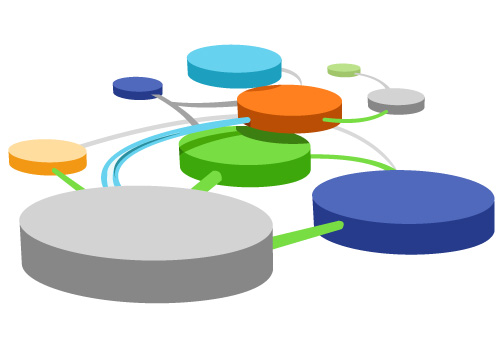PaaS: Going Beyond Normal Physical Cross Connects
October 6, 2015Telehouse IT Solutions Director Dariusz Malkowski Joins the Panel at Hosting and Cloud Summit

 How IT is Like Archeology
How IT is Like Archeology
“For me it’s all about gathering pieces of information to create the whole picture,” says Dariusz [pronounced Dah-ri-us] Malkowski—Telehouse IT Solutions Director. Dariusz holds multiple certifications in computer technology, but not everyone knows he earned a graduate degree in History and Archeology.
“Everybody thinks archeology is only about getting a shovel and a hat like Indiana Jones.”
Actually, it’s not that easy.
“You need to learn multiple technologies in order to do it right. In fact, people in the field are writing academic papers, right now, on breakthroughs in using data to get the big picture.
“I started my first year in a class of 500. By the third year we were down to 30. Of those 30, only 3 people would actually find jobs in the field. The intensity and focus require is hard to describe. What I learned from this painstaking discipline is how to gather any type of information.
Las Vegas Summit to Discuss Connectivity
Early in September, Dariusz joined a panel discussion with his Peering peers on Balancing Network Cost and Performance in a Hybrid Cloud World at the Hosting and Cloud Transformation Summit in Las Vegas.
Read more about Dariusz’ panel appearance
Dariusz sat down afterwards to give his take on what challenges people are facing—and the connectivity innovations that were on everyone’s minds.
Security Solutions From the Intersection of Mobile Device Use and Platform as a Service (PaaS)
What challenges did you and the panel talk about?
Dariusz: We discussed the current and future state of connectivity in the US, upcoming changes, and new technologies that may disrupt connectivity in the future.
More and more, connectivity is about software-defined networking. Customers expect technology businesses to design easier ways to cross-connect between facilities. Efficiency and speed are top priorities. Technology is going beyond normal physical cross connects.
One connection for multiple services is the way of the future.
This new process will offer higher levels of network security, which is good news for CISOs and IT teams.
How PaaS Works
The way it works is the vendor offers a single platform where all of the services a business uses can connect. It’s now called PaaS (Platform as a Service). Sample services a platform would include might be:
- Cloud services such as AZURE
- Connecting external office location Ethernets
- Mobile device access
- Connecting to social media through a platform
This platform is typically outside of the company network. This external positioning allows security layers to buffer the perimeter of your network, as access into the network is limited to a single point of entry.
This is a huge benefit, as it limits intrusion and disruption, such as a DDoS attack.
How the Platform Works
In the current connectivity model, the Edge Router:
- goes through Internet to get to particular service.
- goes through Internet to get to a mobile phone provider
This repeats for every service the company uses.
In the new connectivity model:
The edge router connects to a platform using VPN encryption: all services attach to the external platform. This allows for a greater layer of encryption between the Internet and the internal company network.
This also solves network security challenges that the Bring-Your-Own-Device (BYOD) movement has prompted over the last 5 years. Employee mobile phones and iPads—and all of the risks they bring—can now live outside the network on the platform.
Platform as a Service (PaaS) is Taking Off
This industry is taking off. You can get PaaS in a wide assortment of flavors: public, private, hybrid cloud, ruby on rails developer, java, app builder, mobile developer, open source—the list goes on.
Developers create the platform. You connect to it—and so do all of your services.
Why Involve Telehouse in a PaaS Discussion?
Dariusz: Because the direction this is going looks very much like NYIIX Peering Exchange, where companies join the exchange and connect to each other using switches.
Some of the same technologies used in Peering are used when companies connect to a platform.
Along with enhanced security, companies can also expect to see the kinds of benefits they experience with Peering: cost savings, redundancy, and, of course, single port access through a VPN which amps up security.
In the end, it’s about protecting your company data.
That’s what people are talking about—just the sheer mass of data that they’re managing.
What’s Next?
Two big events are coming up in October. Next week, I’ll be attending NANOG 65 in Montreal. Stand by for more news from this event.
Read more: Could the move to cloud spell the end of Data Centers?



